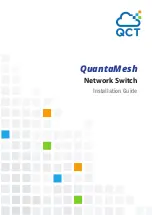
23
Cisco 500 Series Stackable Managed Switch Administration Guide
424
RIP
This section describes the Routing Information Protocol (RIP) feature. The Sx500
models do not support the RIP Feature.
It covers the following topics:
•
Overview
•
How RIP Operates on the Device
•
Configuring RIP Through the WEB GUI
Overview
Routing Information Protocol (RIP) is an implementation of a distance-vector
protocol for local and wide-area networks. It classifies routers as either
active
or
passive
(silent). Active routers advertise their routes to others; passive routers
listen and update their routes based on advertisements, but do not advertise.
Typically, routers run RIP in active mode, while hosts use passive mode.
The RIP feature is supported only on the SG500X platform (which is always in
Layer 3 router mode). The switch supports 128 IP interfaces and 128 IP routes.
The default gateway is a static route and it is advertised by RIP in the same way as
all other static routers, if it is enabled by configuration.
When IP Routing is enabled, RIP works fully. When IP Routing is disabled, RIP
works in the passive mode, meaning that it only learns routes from the received
RIP messages and does not send them.
NOTE
To enable IP Routing from the web-based interface, go to Configuration >
Management and IP Interface > IPv4 interface page on the 500X models. The IP
Routing control is available on the 500X models only.
The switch supports RIP version 2, which is based on the following standards:
•
RFC2453 RIP Version 2, November 1998
















































